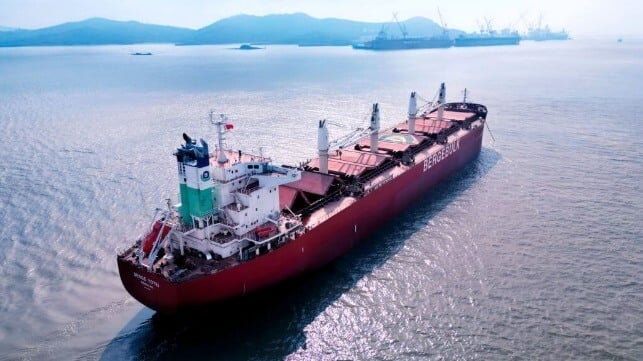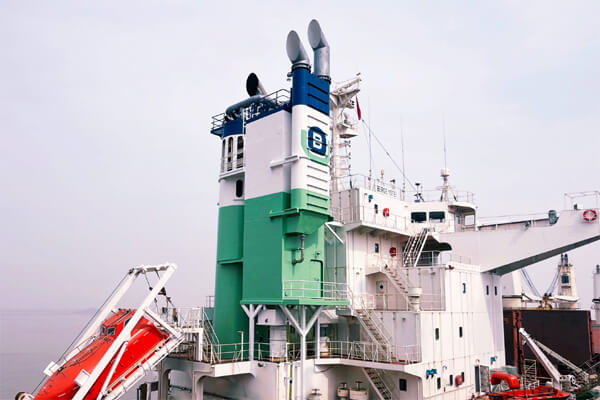Berge Bulk Begins Pilot for Onboard Carbon Capture System on Bulker

Berge Bulk has become the latest ship owner to begin to test an onboard carbon capture system. Interest continues to grow in the technology as a means of maintaining the economic life of in-service vessels as the new emissions regulations emerge, as well as a possible approach for newbuilds during the period of uncertainty and lack of supply for alternative fuels.
“Carbon capture is a key pillar of our decarbonization strategy,” said James Marshall, CEO of Berge Bulk. “While we remain committed to optimizing fleet efficiency, installing decarbonization technology, and switching to new fuels, we must also capture carbon at the same time. We’ve been actively capturing carbon through nature-based solutions on shore for many years, now it’s time to also start capturing carbon on board.”
The pilot project is taking place aboard the company’s 63,000 dwt Ultramax bulker, Berge Yotei. Delivered in 2020 and in the Isle of Man registry, the ship was built at the Imabari Shipyard in Japan.
The system being used in the pilot was developed by Value Maritime and integrates carbon capture into an exhaust gas cleaning system known as the Filtree System. It is designed to capture up to 15 tonnes of CO2 per day, representing a potential 30 percent reduction in emissions during operations.
Unlike conventional scrubbers, the Filtree System removes both sulfur oxides and CO? from a vessel’s exhaust. CO? is absorbed into a reusable amine solution, which can be offloaded in port for regeneration or reuse. Potential applications include use in greenhouses, beverage production, and other industrial processes.

Carbon capture system was integrated with the scrubber and easily installed on the vessel's funnel (Berge Bulk)
Berge notes that while regulatory frameworks such as MARPOL and the EU ETS are still evolving, it is already contributing practical insights into how onboard carbon capture systems can be implemented, monitored, and scaled. The company, which owns, operates, and manages a fleet of over 100 vessels with a carrying capacity of more than 15 million dwt, emphasizes the need for collaboration across governments, ports, technology providers, and regulators to develop the infrastructure, protocols, and commercial models needed to support carbon capture at scale.
Value Maritime was established in 2017 and began installing its system in 2021. It has recently completed installations on other large vessels. Eastern Pacific’s chemical tanker Pacific Cobalt (49,886 dwt) installed the system in 2023. Mitsui O.S.K. Lines also recently installed the system on its tanker Nexus Victoria (75,000 dwt).
After some initial skepticism due to the need for storage and offloading CO2, the technology is gaining interest in the maritime sector expanding on the shore applications are large emitters. Wärtsilä just announced the commercial launch of its onboard carbon capture system calling it a breakthrough in decarbonization for in-service and new build vessels.
